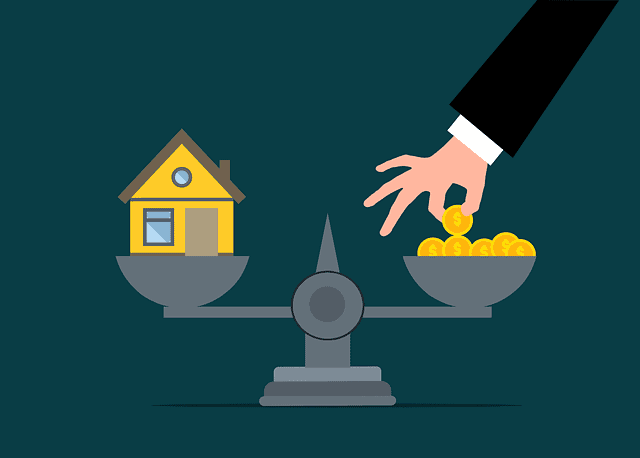(Translation for Billigste Refinansieringslån: Cheapest refinancing loan)
In the not-too-distant past, mortgage refinancing rates were at a record low but have since risen considerably in 2023.
That doesn’t count you out, depending on when you received your primary mortgage. A refinance can still be reasonable in your situation.
The priority when refinancing is saving money. A mortgage refinance aims to cut “½ to ¾ of a percent point from the loan,” according to financial experts, to lower the monthly installment with less interest over the loan’s life.
Borrowers can shorten the loan’s life, resulting in less interest over the term; however, this will mean a higher monthly repayment. Considering how long you’ve repaid the debt, you’re also looking at a smaller balance. It’s possible to “break-even” roundabout with the installment.
You can also cut the term from 30 years to 15 to repay the loan more rapidly. This will save you considerable interest, but you’re looking at a hefty monthly repayment. It’s worth the investment to get rid of the debt faster.
Let’s look at a few steps to guide you toward a lower monthly repayment. A few variables depend on your approval, including the existing mortgage rate trends, the location, and the house.

Table of Contents
Tips On Getting Reasonable Refinance Rates
Many homeowners look to refinance their mortgage a few years after purchase if the rates are in their favor and they’re in a good credit and financial position to do so. They aim to save on their monthly repayment costs and prefer to save on interest over the loan’s life if possible.
Each of the following steps guides homeowners toward a rate that will help lower the monthly installment amount. It’s essential to pay attention to variables that will affect your loan process.
When researching refinancing products from sites like refinansiere.net/refinansieringslån, consider the following suggestions before committing to a specific lender.
Make improvements to your credit profile.
Quick fixes to a credit score are only possible if there are discrepancies to the profile that must be corrected. Other than that, it’s essential to make repayments promptly and consistently. Lenders pay close attention to this part of the credit history because their primary concern is whether you will repay the debt.
It’s also vital to consider paying down significant, exceptionally high-interest credit card debt with large balances. Paying these with lump sum repayments will reduce the “debt-to-available-credit-ratio.” The suggestion is to avoid being over 30 percent of the credit line on any credit card.
It would be best if you also tried to avoid closing out aged accounts. These support an active credit history and help to reduce overall available credit. The only way to improve a credit score is to practice good credit habits the majority of the time.

Compare mortgage offers; the more, the better.
When you want to save on refinancing, comparing competitive rates among mortgage lenders is important. Every fraction of the difference results in thousands in savings. Always consider the APR along with the interest since this includes fees, offering better insight into the true cost.
You could find that the lowest marketed rate has the most fees and closing rates, making their APR higher than any competitor. A loan calculator can be exceptionally helpful when assessing figures from different providers.
Decide the loan term that works best.
When refinancing, many people want to get the loan repaid as fast as possible. Usually, no one wants to refinance for another 30 years, so the decision is often 10, 15, or 20. While these will carry lower rates than the longer loan term, you will repay much more.
Something to think about, though, is while the monthly installments might be higher, your loan balance isn’t what it was with the primary loan. It should be considerably less – perhaps. I know much of the first few years is applied to interest, with little going to principal.
If you find yourself just comfortable enough with your monthly obligations and the new bigger repayment, consider the possibility of a job loss, illness, or family obligations that could make the new debt a problem.
You don’t want to be stretched to capacity with no room if there’s a challenge in your life. Having a degree of financial freedom is essential. A longer-term allows that even though it will cost more over the loan’s term.
Lock in at a fixed rate.
When refinancing for a 15- or 30-year term, the lender will offer either a fixed or variable rate. A fixed choice is much more valuable than an adjustable one since it provides permanence and predictability with a budget.
It makes sense if you plan on staying in your home for any extended period. For those planning to move quickly or with rates that might drop any second, an adjustable loan would probably be more conducive to those scenarios.
While the rate on these loans can drop, realizing it can also increase significantly is essential. A fixed rate carries minimal risks.
What will the borrowing amount equal
The greater your borrowing amount for a house loan, the more the repayment installment will be. In a scenario where a borrower puts 10 percent down on a couple hundred thousand dollar house financed for 30 years with an interest rate of 4 percent, the repayment will be close to $2000.
However, if that same borrower saved and put 20 percent down, typically what lenders request, the repayment would only be roughly $950. The long-term savings should be the primary consideration. The more you can do initially, the better for your bottom line.
Online calculators greatly help you decide facts and figures for your mortgage loan. You can punch in any series of numbers to see how it will affect the result and allow you to find a loan that will better serve your financial circumstances.

Should you pay closing costs upfront?
The house’s location and purchase price will decide the closing costs. As a rule, it roughly ranges between “3 and 6 percent of the home’s cost.” The closing rates for a home in the $300,000 price point will be between “$10,000 and $20,000.” In some cases, these are negotiable.
Some loan providers are willing to roll these into the loan, which would deem the product a “no-closing-cost refinance.” These usually involve a higher rate to secure the no closing at the time of closing. That means a higher repayment, plus you’ll have a higher interest over the term.
Doing your best to secure the closing costs and pay these upfront on the day of closing is suggested as much as you can take care of; a larger deposit, the closing, the better for you over the long term. It’s a considerable investment, but the savings will be tremendous.
Final Thought
Before committing to any loan, it’s essential to research, calculate with a loan calculator, prequalify, and compare loan products with as many mortgage lenders as possible for even a fraction of a percentage. That can equate to thousands in savings.
Take the time to review your credit profile and score to see where it stands and boost the score as much as possible as rapidly as you can. That will mean correcting errors or discrepancies and paying off high-interest credit card debt in lump sums for fast results.
Find a way to accumulate a substantial down payment and the closing costs; you’ll need to achieve a lower repayment and considerable savings in interest. It’s a significant investment, but it will save you an incredible amount in the long run, and that’s what refinancing is about.
